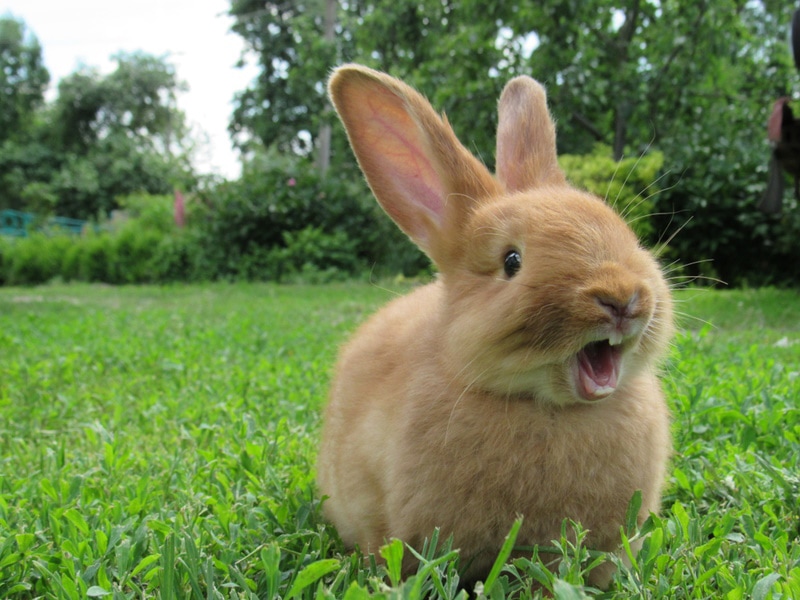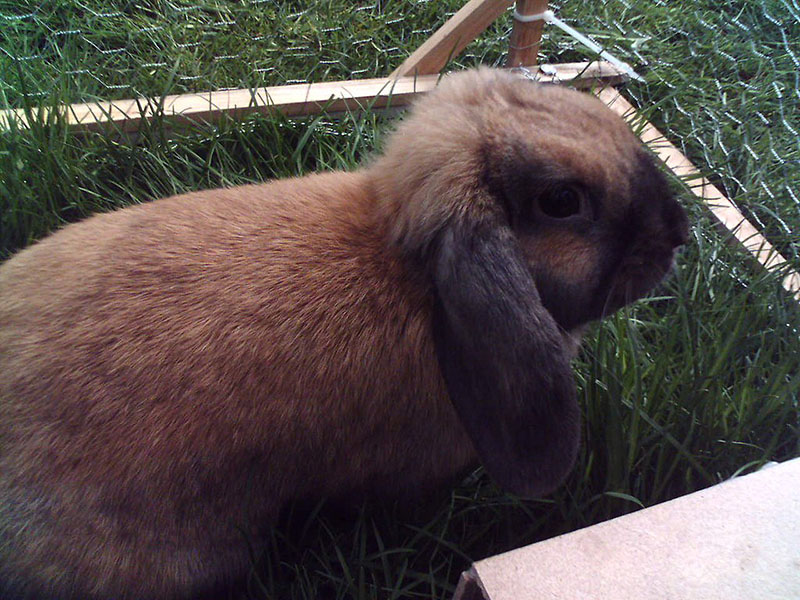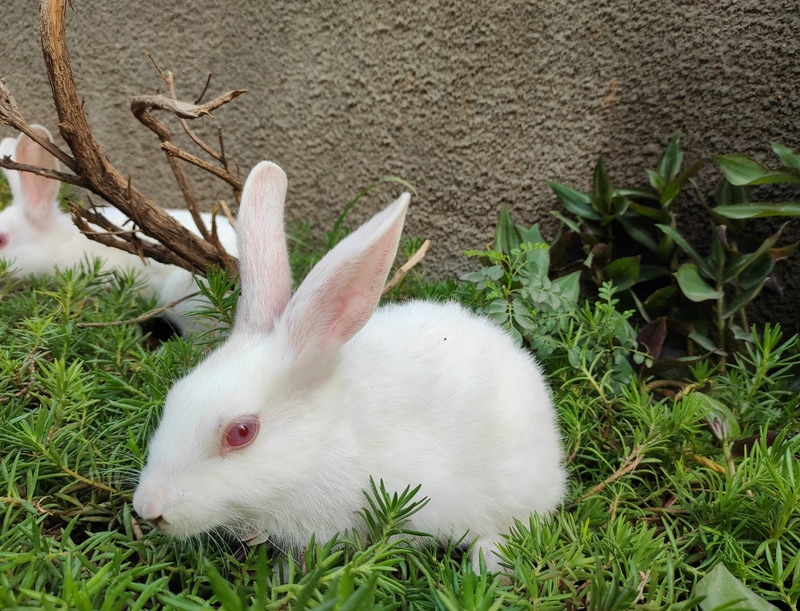How to Get Rid of Rabbit Pee Smell: Expert Tips & Tricks
By Kit Copson
Updated on

Rabbits are much-loved pets in many homes, but it’s not so cute when you walk past their enclosure and catch a whiff that knocks your socks off. Worse yet, sometimes you find little patches of pee around the house on your floors, carpets, or bed, and, in spite of your best efforts, the smell just lingers on and on.
This happens because rabbit pee contains a lot of ammonia, and when it builds up or your rabbit is peeing around your home instead of in a litter box, it can cause a horrendous smell.
Whether your rabbit has had an accident somewhere or you need some ideas for cage maintenance, this guide is packed with tips and tricks for eliminating the pee smell once and for all. We’ll split the tips into home cleaning techniques and tips for cleaning the rabbit’s environment.
Home Cleaning Techniques
1. White Vinegar & Water Solution

Though white vinegar itself has a rather distinctive aroma, it makes for a simple, safe, and inexpensive yet effective cleaning product. To tackle rabbit urine smells around your home, simply combine one cup of water and one cup of vinegar in a spray bottle and swirl it to mix things up.
If the area you want to clean is still wet, pat it with some paper towels first to soak up excess liquid and remove some of the odor-causing compounds. Then, spray your white vinegar and water onto the affected area and let it sit for around 15 minutes. Once the 15 minutes are up, press a clean cloth or paper towel onto the area to get rid of excess liquid and let the area dry or vacuum it.
Have a whiff to see if you can still smell anything funky, and, if so, go through the procedure again until the urine odor is gone. It’s a little risky to use white vinegar on hardwood floors due to the chance of discoloration, so you might want to go for a very diluted version of half a cup of white vinegar instead of a full cup. It’s also prudent to do a spot test first.
2. Enzyme Cleaners
An alternative to using a white vinegar and vinegar solution is to purchase a commercial pet urine enzyme cleaner from your local pet store, hardware/home store, or supermarket. Pet enzyme cleaners are designed to be sprayed onto an area (carpet, hardwood floor, etc.) that’s been peed on to neutralize the bad smell left behind. Some are multi-purpose and also tackle tough urine stains.
Our favorite enzyme cleaner is the Hepper Advanced Bio-Enzyme Pet Stain & Odor Eliminator Spray. It's our product, and we love it so much, we just have to share. It permanently removes the very worst smells and stains (yes, everything you can imagine!), and we offer a 100% satisfaction guarantee!
- ADVANCED ENZYMATIC CLEANER - Penetrates the most stubborn smells and stains at the deepest molecular...
- FOR ANY MESS, ON ANY SURFACE - This pet odor eliminator cleans your carpets, floors, furniture,...
3. Baking Soda
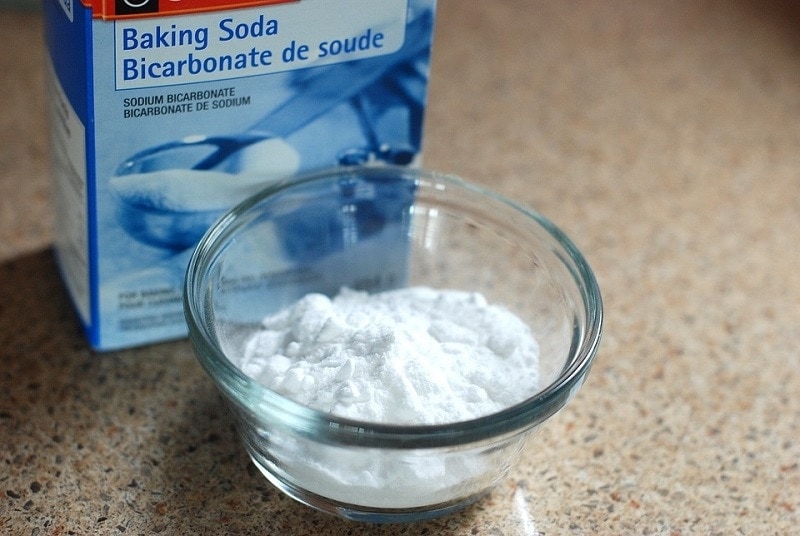
If you’re looking for more cleaning powerhouses you can find around your home, baking soda, like white vinegar, is great at neutralizing odors. This trick is best for damp areas, though. If the urine spot has already dried, you may be better off with an enzyme cleaner or white vinegar solution.
Dab the wet area with a paper towel or a dry rag, then sprinkle a thin layer of baking soda over the spot. Let this sit for a long time, ideally overnight, then hoover the spot. If you want to make an even more powerful white vinegar cleaner, you can mix two teaspoons of baking soda into one cup of water and one cup of white vinegar in a spray bottle.
4. Hydrogen Peroxide & Water Solution
For extra odor-neutralizing power, you might want to bring 3% hydrogen peroxide into the mix. Sprinkle some baking soda over the affected area and mix half a cup of 3% hydrogen peroxide with two cups of water in a spray bottle.
Spray this mixture on top of the area, then take a soft brush and scrub the area well to work it into the carpet. Leave until dry, then vacuum. Take note that hydrogen peroxide might stain some carpets, so you should do a spot check in an inconspicuous area before trying this method.
5. Washing Machine & White Vinegar

If it’s your clothes or another type of fabric that can go in the washing machine that has fallen victim to rabbit pee, you can spray these with the white water and vinegar solution, let them sit for 10 minutes, dab them with a cloth or paper towel, then put the clothes in the washing machine while still damp. Alternatively, you could try an enzyme-based detergent.
Hutch, Health, & Environmental Maintenance Tips
1. Clean the Hutch Thoroughly Every Week
If the problem is linked to your rabbit’s hutch, it might be time to reassess how often you’re cleaning it. A rabbit hutch should be cleaned thoroughly at least once per week. All old bedding (but keep just a little bit of unsoiled bedding to put back in the clean hutch so your rabbit has a familiar scent), litter, and spoiled food should be taken out and replaced, and the hutch itself should be disinfected with a rabbit-safe cleaning product.
The food, water bowls, and toys should also be cleaned, as should the litter box, as this is where the problem often stems from. By performing a thorough hutch cleaning per week, you’ll help to eliminate any foul odors that build up over time.
2. Do Daily Spot Cleans
Though you might be able to do a thorough hutch clean and disinfection just once per week, daily spot cleans are just as important. This means checking your rabbit’s hutch daily for dirty litter, soiled bedding, and spoiled food, and removing and replacing it as necessary.
3. Litter Train Your Rabbit
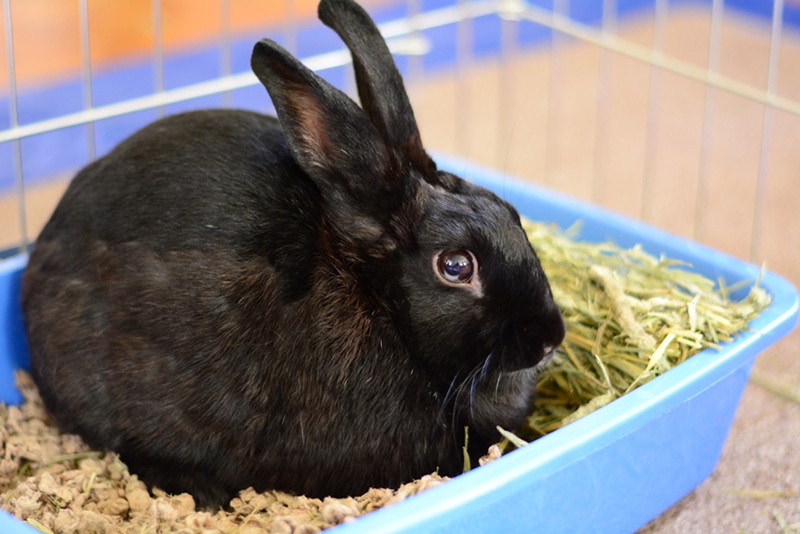
If your problem is that your rabbit just keeps peeing wherever they please, you can improve the situation by litter training them. You can start litter training your rabbit by placing a box or tray of rabbit-safe litter in an area they most like to go to the bathroom.
4. Change Litter as Needed
Some types of litter might need to be changed every couple of days, whereas other types might last for a few days more. It’s not the most pleasant of tasks, but it only takes a few minutes and goes a long way toward keeping the hutch smelling fresh.
5. See a Vet

If it seems like your rabbit’s hutch still reeks no matter what you do, you might want to think about checking in with your vet to make sure there are no underlying health conditions going on. Your rabbit may be suffering from a urinary tract infection which is causing them to pee more frequently.
6. Consider Spaying or Neutering
Rabbits that are intact, both males and females alike, have a tendency to mark areas with urine that smells pretty bad, especially males. This behavior is territorial. Fortunately, spaying (females) or neutering (males) may help stop this from happening. Speak to your vet about spaying or neutering, as they’ll be able to address all your questions and concerns.
 Conclusion
Conclusion
Rabbit pee is famous for its strong smell due to how much ammonia it contains, and the smell can be even worse if the rabbit is unspayed or unneutered.
All that said, rabbits are clean animals as a rule and can even be litter trained. Smells in their environment typically stem from a buildup of odor-causing compounds, especially if their enclosure isn’t cleaned thoroughly enough. This is why it’s so important to freshen up the hutch regularly and work on litter training your rabbit to prevent them from urinating in other areas in your home.
Featured Image Credit: New Africa, Shutterstock


